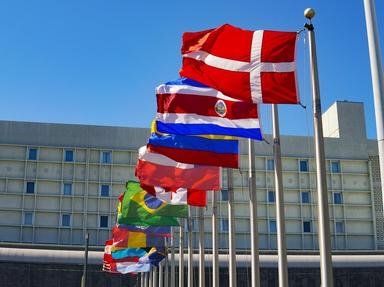Quiz Answer Key and Fun Facts
1. Black, red and gold are the traditional colours of this nation, as seen in its art and in its cultural clothing. This is the flag of what country, that achieved independence from Australia in 1975?
2. The tree depicted on this flag carries the same name as the Australian external territory that it represents. This is the flag of what island or group of islands?
3. Visually representing its location in relation to the equator, this is the flag of what country?
4. Prior to gaining independence in 1978, this country was a British protectorate. With over 900 islands, what country flies this flag?
5. When Chief Taufa'ahau Tupou became King George Tupou I in 1845, he took on a flag for his nation that represented Christianity. This version, adopted in 1875, is the flag of which kingdom?
6. The nine stars on this flag are laid out in the geographical pattern of the country's inhabited islands. To which nation does it belong?
7. The V-shape on this flag is representative of the actual shape of the islands in this country. Which country, previously called New Hebrides, now flies this flag?
8. Colonially, this country was first claimed by the British, then annexed by New Zealand in 1901. Upon achieving self-governance in 1965, they continued to use the flag of New Zealand, until designing their own flag in 1973, and updating it to this version in 1979. Which island democracy, comprised of 15 major islands (count the stars) uses this flag?
9. Once a German colony, New Zealand took over this country under a UN trusteeship, until it gained independence in 1962. In use since 1949, this is the flag of what country?
10. The flag for this country was originally designed as a naval ensign in 1869, but would also be adopted as the national flag in 1902, just prior to gaining Dominion status on September 26th, 1907. This is the flag of which country?
Source: Author
reedy
This quiz was reviewed by FunTrivia editor
stedman before going online.
Any errors found in FunTrivia content are routinely corrected through our feedback system.
